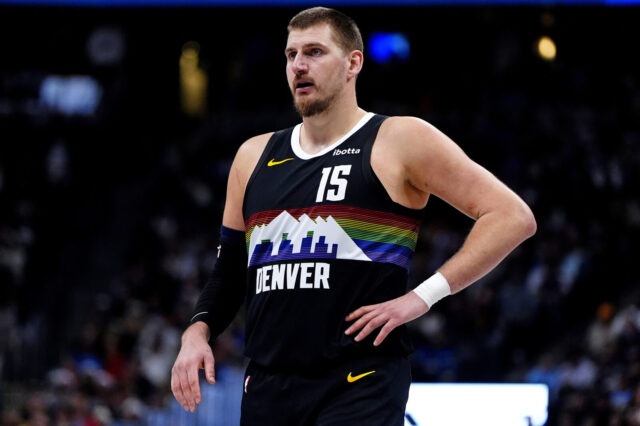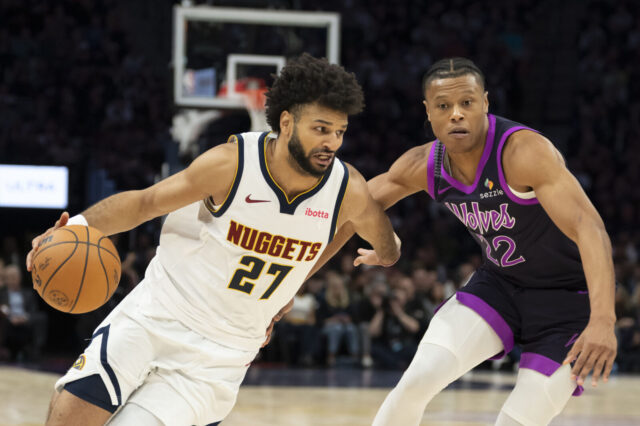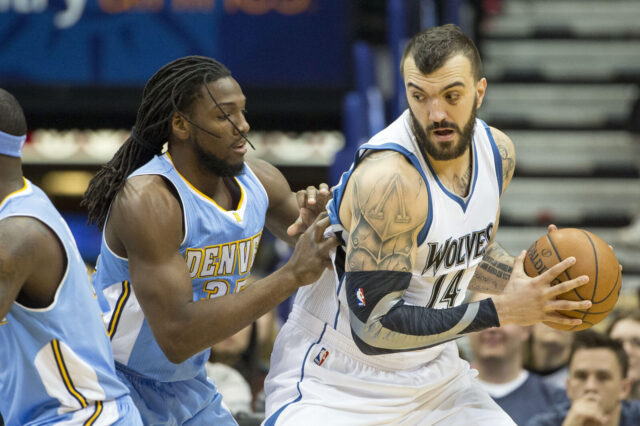Requred? We’re off to a bad start. It would seem like a proofreader should have been requred. Watching last night’s game between your Denver Nuggets and the Los Angeles Clippers, it would have seem like a change of plan may be requred. Required.
When I’m not blathering on about the Nuggets every week, I spend my time trying to figure out what works and what doesn’t. My job is to make today better for my company than yesterday, in terms of awareness and perception. 24 hours ago doesn’t count, I need to win today. Sadly, I only win 20-30% of the time when I “get my shots”. It’s humbling to see good ideas go up in flames 80% of the time, and when you run really cold, it’s a real grind. In a basketball metaphor, my numbers don’t work. A 20% shooter isn’t what most NBA teams are looking for. Had I said “get my at bats”, it barely works. You’re better off a career .300 hitter than .200, for danged sure. Thankfully, in my line of work, that numeric range is a very happy number, one I’ve been lucky to achieve.
The reason that low percentage works so powerfully for my job is simple. I get to try a lot of really intriguing and compelling ideas and see how they work in real time. I watch the numbers on what I try, and the second I know it doesn't work, I get to throw it away. The stuff that does work, I get to pile on top of my current rate of return forever. Like compound interest. If I get you 1% on your dollar, that penny may not inspire you. But a dime just might. Try either of those percentage rates on hundreds of millions of dollars, though, and you see where it gets interesting. The only trick to the game is being willing to admit when what you’re trying isn’t working, and shutting it down the moment you’re sure. It’s a luxury for me that I get a ton of data, where sports organizations only get a finite number of chances to roll the dice. Say, 82 chances, when your ultimate KPI is binary in wins and losses. I see numbers that tell me when there’s no doubt, and clear the losses off the board before my company even feels it. I enjoy my work because I am pretty unwavering about being open and honest with the consumers I’m talking to, and making that interaction a positive for them and my company simultaneously. Unsurprisingly, I see a lot of bad actors in my space who bend a lot of morals and ethics to grab a piece of the numbers I see bounced around.
And it can often be a mistake to only try a good idea once. It’s a little hubristic to think “I tried that the only way it can be tried that one time.” I’ve regularly revisited ideas when they seemed seemed like good ones, and often found a better way to execute it that actually turns it into a positive. I’ve even revisited ideas dozens of times when forced to do so for one reason or another. In the latter case, you often come to find that you’re trying to force a square peg into a round hole. All you get is splinters, cursing, and a lot of lost time. At some point, you have to admit defeat and move back to what works, trying other new ideas and avenues to improve your success rate.
At the beginning of the 2016-2017 season, the Denver Nuggets came out of the gates with a twin towers roster that featured their two talented big men, Nikola Jokic and Jusuf Nurkic. When trying to play two centers In this new era of the stretch four, you’d think your best move would be to move the better three-point shooter to the power forward slot. You open up the opposing defense, and keep the floor better spaced. There are other factors, but it’s a reasonable hypothesis to try if you want both guys on the floor.
Sadly, that experiment didn’t work out for the Nuggets on that first try, as moving Jokic to the perimeter and leaving bigs in the lane took away a lot of what makes Jokic special. There wasn’t as much room for the cutters he hits so surgically. He didn’t pull the other team’s center out of the lane with him. Playing the four can make Jokic a larger defensive liability when playing against guys who are largely smaller but more athletic. Largely smaller. Good god. When playing against a group of guys who is usually smaller. You know what I mean.
The mid-December date that moved the Joker to the five has been endlessly fawned over on this site, including by yours truly, and for good reason. It was the day the Denver Nuggets became the number one offense in the league through the remainder of the season. The move changed the dynamic of the team to the positive, though it left a negative defensive effort in its wake. A subject to be fixed, for sure.
Enter one Paul Millsap, an All-Star and defensive stopper who was quickly shifting the team’s defensive presence without removing any of Jokic’s offensive wizardry from the picture. Had he not been injured, it’s easy to imagine a very different vantage point for the Nuggets at this juncture. Without a plus defender down low, Denver often gave away as many (or more) points than they could muster. The only other big who fit the role of heavy-minutes plus defender was Mason Plumlee, and so…
You revisit a test. You try something over again, thinking that maybe it was the fault of another factor. Maybe you had the right peg in the the right hole after all, you had just done it with the wrong complimentary piece. It’s possible. Suddenly, Jokic finds himself back at power forward with two big guys jostling right about where he’d like to place a pass, and with his three-point range suddenly a struggle. The offense stutters when one of your one-on-one guys isn’t hot, and you look a lot like the configuration that failed the first time around.
Conversely, moving Jokic back to the five costs you on defense if your four isn’t a plus. The only other defensive-plus power forward on your roster is Darrell Arthur, who is barely above the median, has had several injuries, and is streaky in his ability to stretch the four. Kenneth Faried was a part of the sieve last season, and cannot shoot the three. Trey Lyles is off to a hot start from beyond the arch and hovers near the defensive median and still learning. That said…
There comes a point in any test where you take a step back, assess the outcomes, and figure out how much more data you need before you decide it’s a win or a loss. Do you take your chances that someone who can stretch the floor like Lyles can also be a defensive positive until Millsap returns? Do you stick with Plumlee at the five? Or the four? Do you put Faried back in hopes you can re-light that candle, or take a bet on Darrell Arthur being the best version of himself for 15 games? The world is your oyster, as long as you work with the pieces already given. In sneaking out to read the boards as I wrap this up, I think I’m only adding to an already-well-engaged conversation… Hi, Adam!
This is a test. This is only a test. An eerily reminiscent test. I may label this test folder “Jokic requred at the four”
This content is no longer available.


